| C6owners :: Forums :: C6 Support :: The Garage |
<< Previous thread | Next thread >>
|
Hydraulic Connections for Across Axle 10mm tubing |
    Please Register to enjoy additional Member Benefits |
| Author | Post | ||
gmerry
 
|
|
||
  Member No: #21
Location: Scotland |
Hi all, looking for a little bit of help here:- The 6 cylinder cars with additional comfort spheres (located middle of the rear axle and under right hand front wheel arch) use 10mm OD tubing across the axle between each corner sphere and the electrically controlled stiffness regulator. In static mode, the 10mm of tubing is the method admitting additional fluid to compensate for load and height changes. In dynamic mode, the 10mm tubing allows for flow into / out of the centre comfort sphere. My immediate problem is that my front 10mm tubing is corroded (seems it missed to corrosion protection when it was manufactured). I have 3/8" OD seamless tubing to replacing it, plus very expensive tooling to produce wrinkle free bends and aircraft quality JIC flares (thats an AN 37 dgree flare, as used in aircraft hydraulics world wide and also subsea hydraulic controls). So my final bit of missing information is the thread form and seal standard that Citroen use to connect the 10mm tubing into the regulator blocks (and also probably the same standard used to comnnect into the rear hydraulic corner blocks. As an aside, Citroen were obviously not happy with the ability to make and break the tubing connections into the front corner axle blocks as used on the Citroen C5 Mark I. The C6 uses a flanged connector (look under the bonnet by the two front spheres where the piping is attached to the manifold block) unlike the Citroen C5 Mark I which just had a tubing connection. You might say why not just buy a replacement pipe/hose assembly. A couple of reasons 1/ might just get another assembly which corrodes 2/ There are incredibly expensive 3/ I would like to think the C6 could be maintained by the skills available in the UK (and Aberdeen) 4/ I have already had a high pressure hose assembly fail 5/ [%*^#@!] mindedness (mine). So anyone, if you have an old piece of 10mm tubing kicking around, saw off a 6 inch stub including the end termination into the regulator block and post to me. I'll pay for the postage and put a drawing on the site. Might help someone in the comming years as spares get harder to acquire. Regards G |
||
|
|
|||
Marc61
 
|
|
||
 Member No: #510
Location: Stamford |
Hi If it's the same as the 10mm pipe that goes to the stiffness regulators on an XM, I've got some of that, can send you an end. Its basically a chamfered flare at the end with a mechanical fitting over that screws into regulator and presses flare down hard onto the hole to seal. Having said that it would take some really serious corrosion to eat through pipe as it's very thick walled pipe compared with traditional Citroen hydraulic line. Cheers Marc |
||
|
|
|
||
gmerry
 
|
|
||
  Member No: #21
Location: Scotland |
Marc, thanks for the offer. I'll PM you with my details and we can take it from there. I'll need the end fitting that screws into the stiffness regulator as well as a stub of tubing. Regards G |
||
|
|
|
||
gmerry
 
|
|
||
  Member No: #21
Location: Scotland |
Hi all, hydraulic connections are M16 x 1.5mm pitch metric fine for the "gland nut" that screws into the stiffness regulator blocks. I have attached photos of the 10mm tubing with beaded flare, the gland nut and the composite aluminium/elastomeric seal. None of this is industrial standard, all Citroen special I think. When I get a spare seal I will post part number for reference as it is not shown on any reference drawing so might be a problem for the mechanic to identify and order. The seal shown is supplied with the complete flexible tubing/hose assembly. Regards G |
||
|
|
|
||
gmerry
 
|
|
||
  Member No: #21
Location: Scotland |
Hydraulic tube, seal, gland nut. 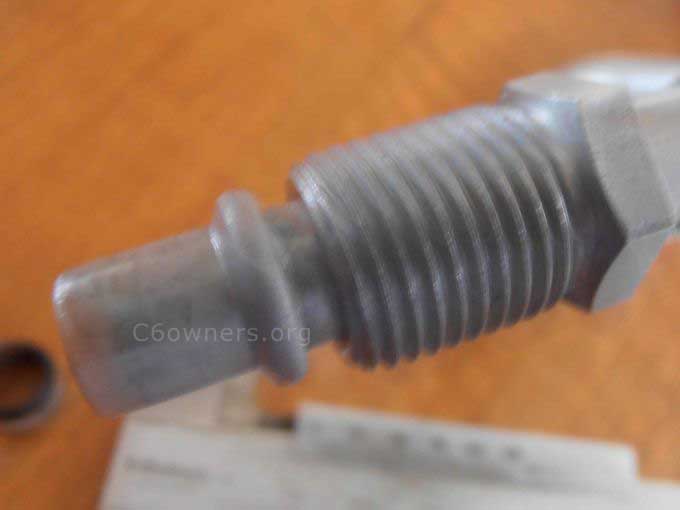 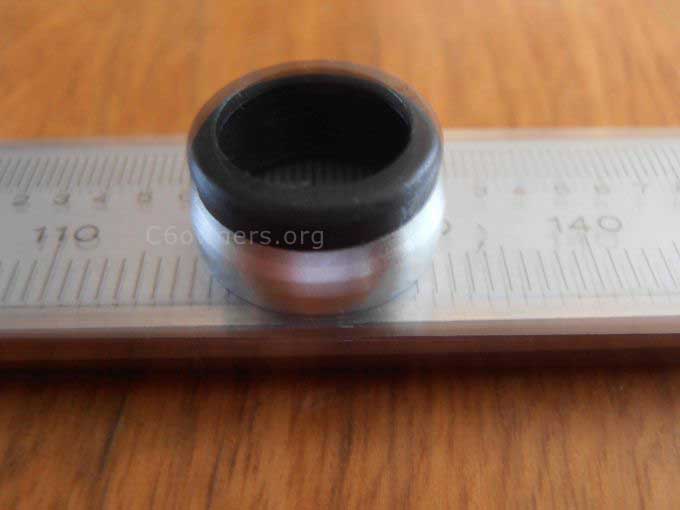 |
||
|
|
|
||
gmerry
 
|
|
||
  Member No: #21
Location: Scotland |
Hi all, as promised here is the part number for the hydraulic seal : end of 10mm tubing that screws into stiffness regulator block. I'm assuming the rear axle stiffness regulator block has the same connection and seal. Part number is 5280 P9 Now I spoke to the local Citroen mechanic about this seal (he has 30+ years on Citroens). First we agreed that the aluminium/elastomer construction is designed to act as a collapsable spacer. Anyone who has played around with Ford rear axles from the 70s (escorts etc) will know what I am talking about. The idea of the aluminium tube is that it will collapse under end load and prevent excessive force going on to the elastomeric seal. It will also stop the elastomer extruding under the hydraulic pressure. One thing to bear in mind that this sort of construction is probably only designed to be tightened once. A curious thing about this seal is that it is not shown on the piping drawing. It is shown on a separate drawing titled "piping bracket" so expect difficulty locating the correct part number. In addition, the drawing sketch looks very different to the actual part. On assembling the joint, I found that the gland nut did not go in as far as originally even when properly torqued. So the mechanic and I speculated that this seal may be a design change to stop seaps. Regards G 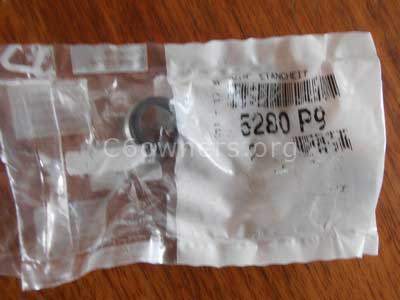
|
||
|
|
|
||
gmerry
 
|
|
||
  Member No: #21
Location: Scotland |
Here's the photos and part numbers for the seals at the other end of the hose assembly where it screws into the top of the front struts. Note this is all for V6 engined models, 2.2 4 cylinder cars are probably different. First photo shows the groove pressed into the end of the tube. 2nd shot shows the white anti-extrusion backup ring. Note this has a scarf cut so it can be expanded over the end of the tube. It will probably be made from some grade of filled ptfe. last shot is of the sealing O ring itself. Part number 5280V7. The new ring supplied on the replacement pipe/hose was green. The original on the car was yellow as is this spare seal. A small mandrel should be used when fitting a replacement O ring. Regards G 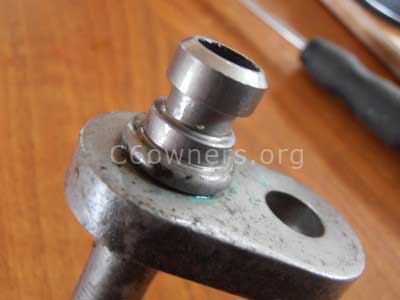 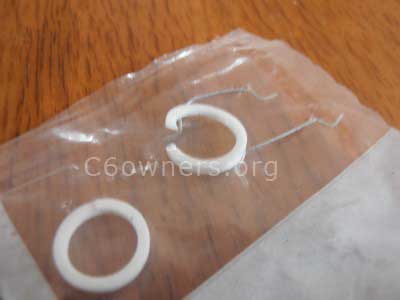 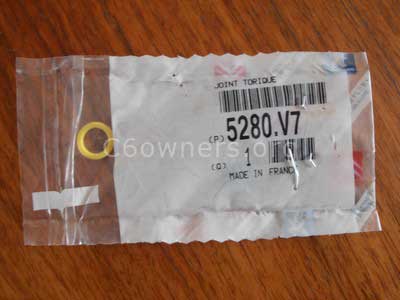 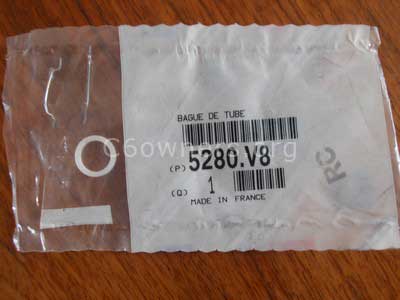
|
||
|
|
|
||
 User Colour Key: User Colour Key:Head Administrator, Administrator, C6 owner, Technical Expert, C6 Premier Discount Club |
|